Heehwa Jo freely admits she fell in and out of love with many different art and craft techniques before she saw the light, realising she could combine a life-long love of her Korean heritage and its traditions, with her passion for embroidery.
Now she can’t imagine doing anything else and has a lifetime of ideas waiting in the wings to express through stitch. She is passionate about exploring the potential of thread – experimenting with direction to manipulate light and colour, and create texture.
Heehwa has embraced her country’s rich tradition of embroidery and made a point of studying it in detail. She shares how she has learnt to see beyond the surface and notice the design principles and invisible ‘rules’ that were followed – and sometimes broken – by ancient embroiderers, whether stitching for family or the royal court.
Heehwa keeps these traditions alive and shares how she uses these techniques – and channels the spirit in which they were made – recreating historic artefacts that are an integral part of Korea’s cultural heritage.
Heehwa’s nickname, JOHH, which she uses on social media, is derived from the Korean format of her name, which shows the surname first and the given name last, Jo Heehwa.
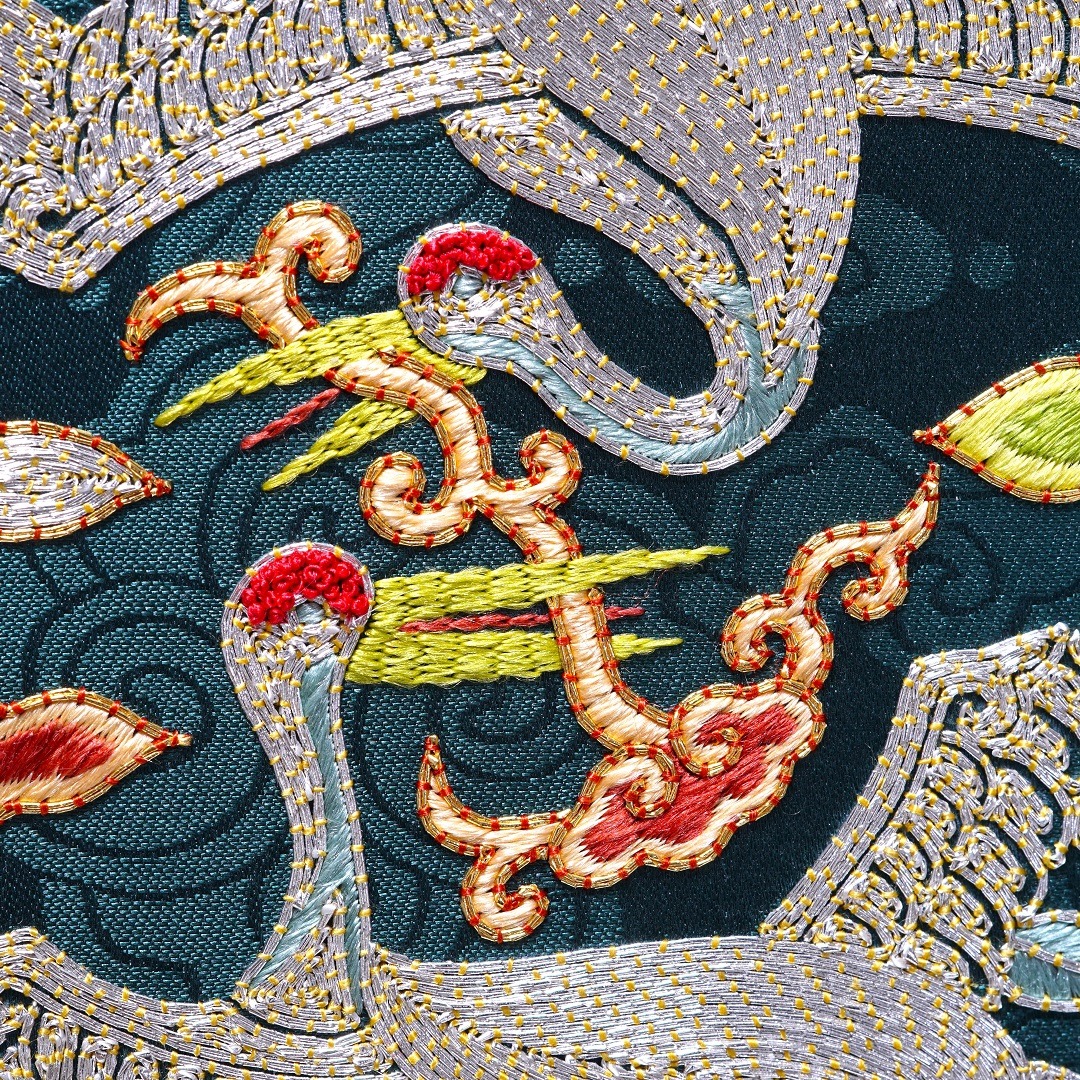
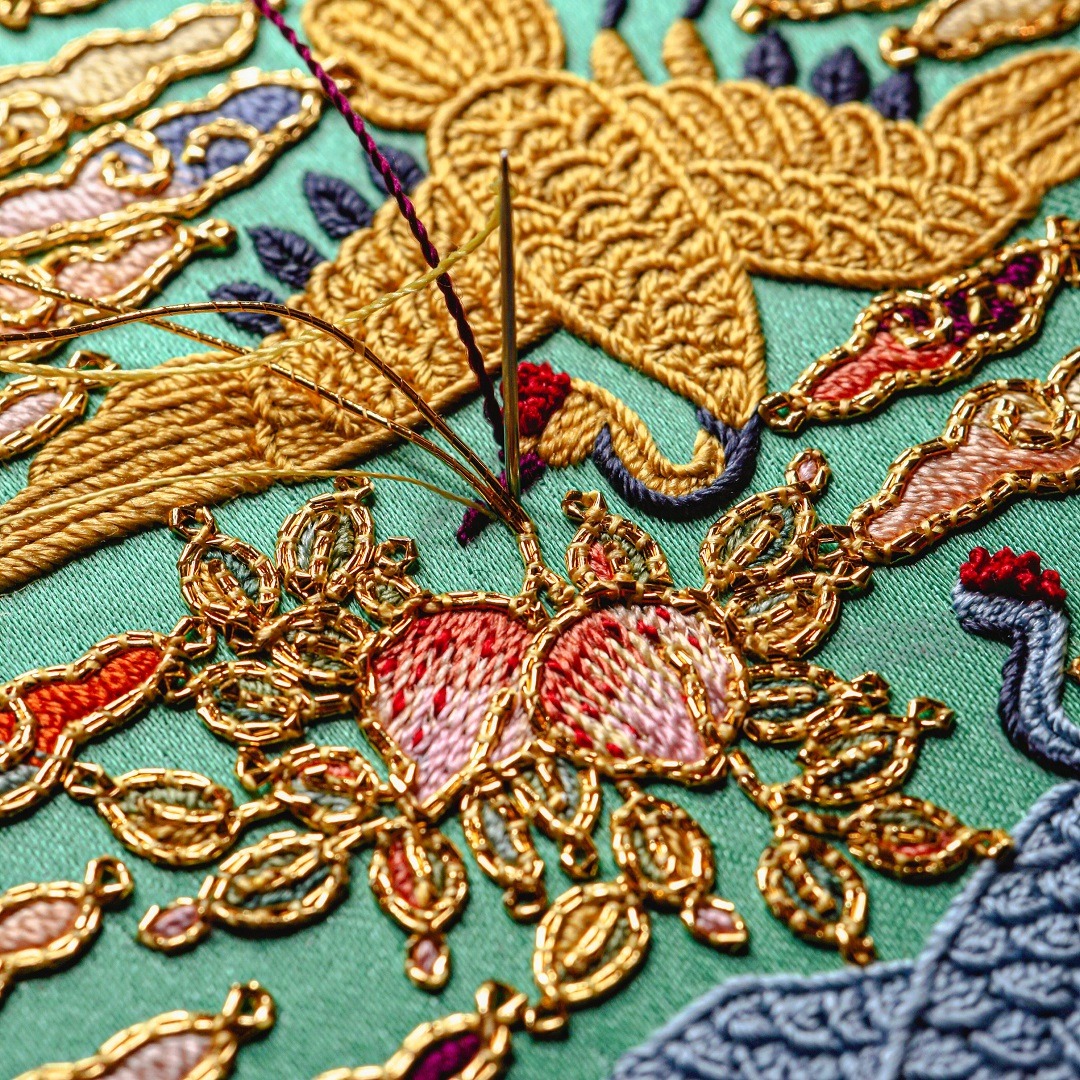
Heehwa Jo: My work is based on traditional Korean stitch techniques and subjects. I’m interested in generating ideas within traditional principles and adding my own creative take on it. I’ve got two ways of working with my embroidery. One is doing embroidery based on historic pieces. I do this for my own self-development, as well as preserving the traditional skills. The other is creating embroidery with my own stamp on it in pursuit of the trinity of craft: aesthetic, utility and meaning.
I am particularly fond of the texture made by stitches and I try to make an impact purely by using threads. Whenever I’m talking about or teaching Korean embroidery, I always emphasise that embroidery is the art of stitches and its language is threads. Traditional Korean embroidery uses mainly sheen silk twisted thread, which creates texture and reflects light and colour.
“The direction of the stitch creates very different textural effects. If you fill in an identical shape using the same stitch and thread, it will look different depending on the direction of the stitch because of the way the light reflects on it. The more lustrous the thread, the more distinctive the difference.”
Heewha Jo, Textile artist
Creating impact with thread
“It’s really important to know the characteristics of thread in relation to the levels of twist and stitch directions. Then you can plan a design and process according to your intention. That is what really intrigues me, regardless of the tradition.”
Heewha Jo, Textile artist
My goal is the ultimate expression of threads – something that I’m working towards mastering through practice and experimentation. That’s why I cherish and value thread – just as a sculptor makes the most of marble, and a cook their ingredients. Of course, I care about colours and design composition as well, but they are not unique to embroidery.
I love using traditional Korean embroidery stitches, and I’m keen on showing their distinctive features. Although many Korean stitch techniques are the same, or similar to, stitches from other countries (albeit with different names), the act of stitching is a combination of techniques, materials, colours, usage and so on. These distinct characteristics are specific to different cultures.
In traditional Korean embroidery, certain stitch techniques are often closely associated with particular elements. For example, Jarit-su (a kind of brick stitch) is normally combined with twisted thread rather than half-twisted thread. Neukkim-su (it’s hard to find the equivalent but it’s a row of sparse stitches on top of satin stitches) was commonly used in embroidery done by ordinary people. While Jingguem-su (couching or goldwork), traditionally was mainly used by professional embroiderers working for nobles or the royal family, although individuals sometimes used it, albeit in different ways.
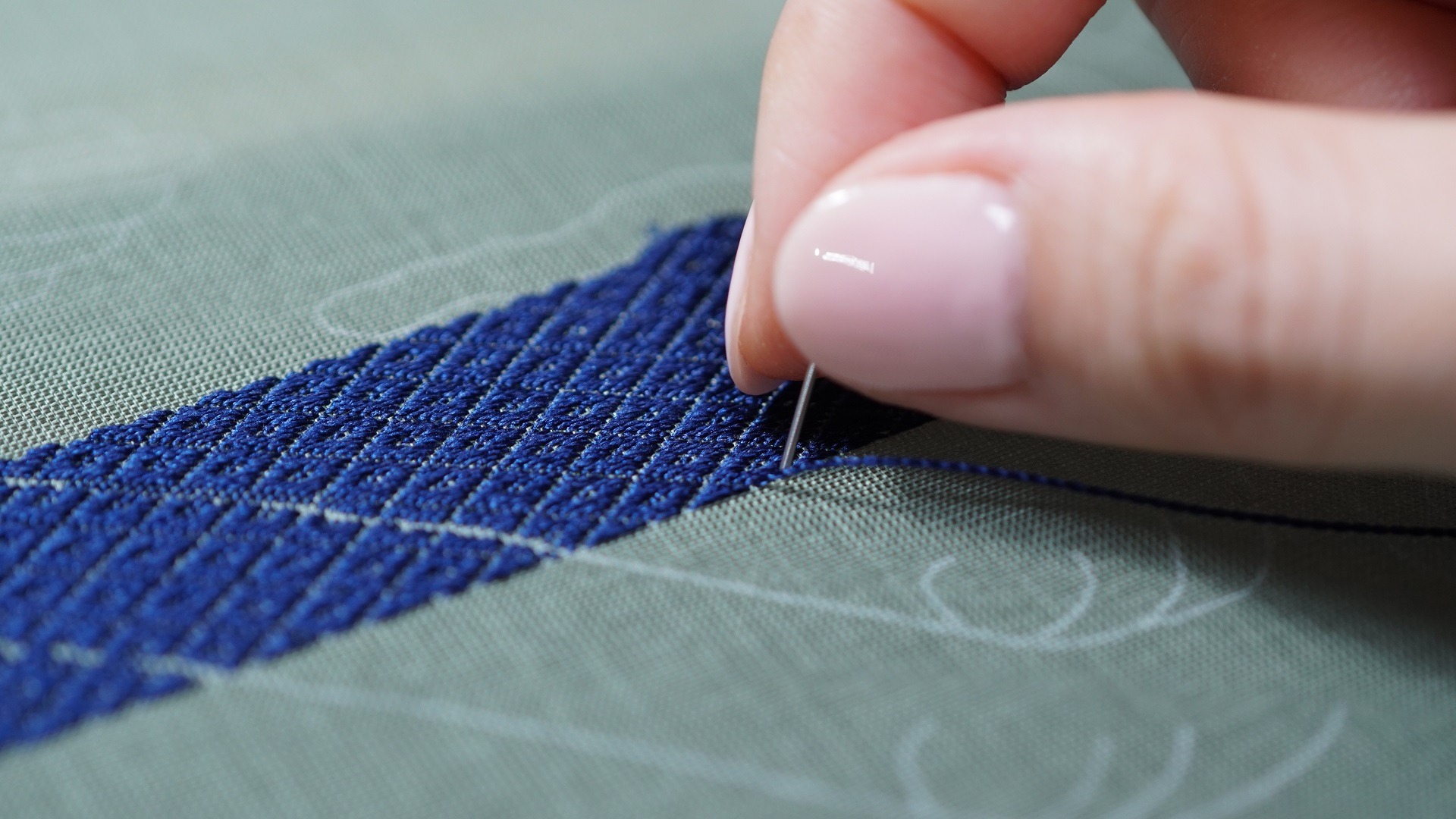
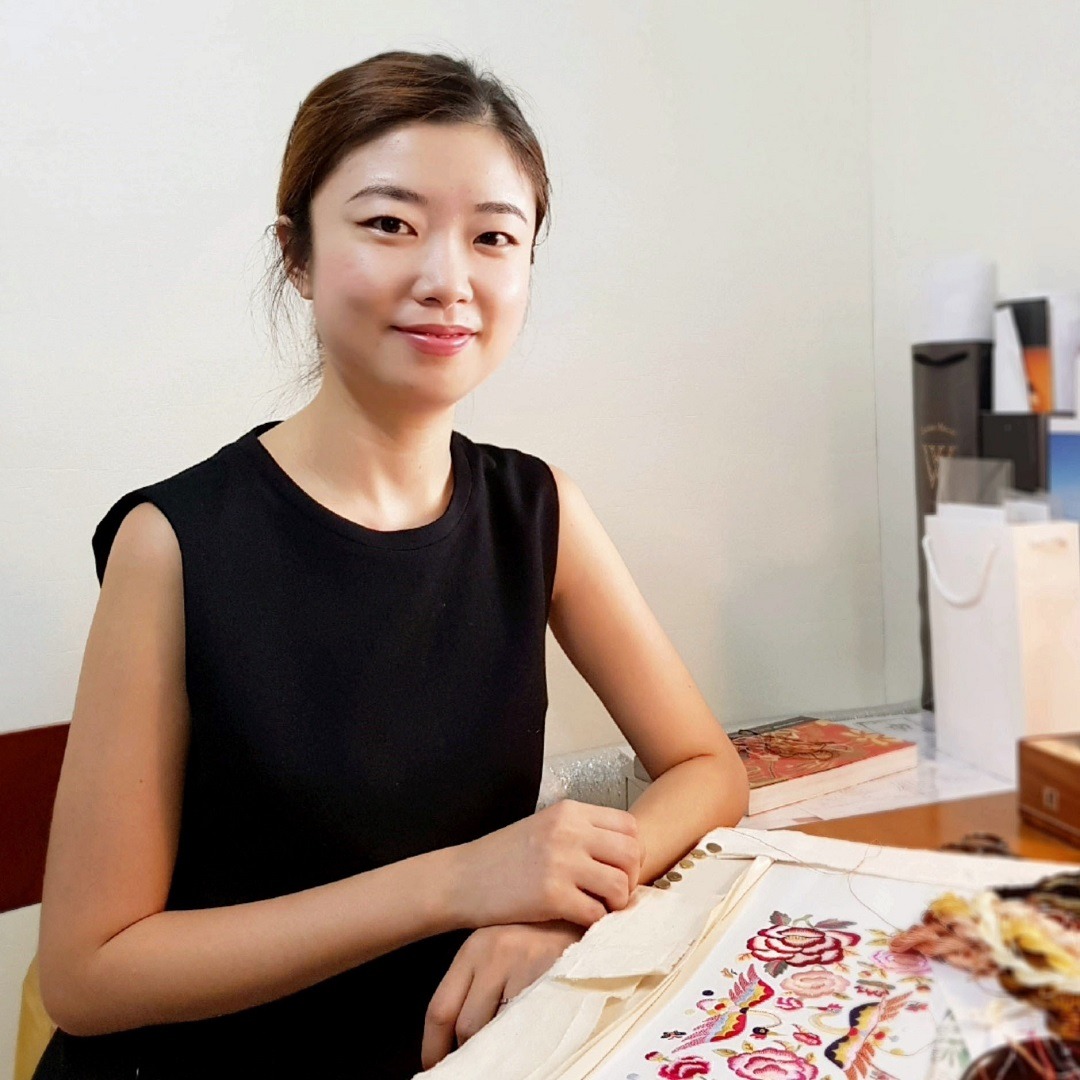
On the shoulders of giants
My work is a collaboration between myself and those who have come before me. It is a combination of their wisdom and my creativity. It is physically and spiritually connected to traditional Korean embroidery, particularly from Joseon dynasty (1392-1897). Nearly all existing Korean embroidery pieces are from this period.
I often make replicas of ancient artefacts. While I’m recreating the pieces I try to empathise with the original makers. I imagine their circumstances and what they might have been thinking so that I can connect with their spirit and understand their way of approaching the work.
“For instance, when I look at a piece of historic embroidery, rather than just reproducing the colour itself, I like to study it and take away how the different colours have been combined. After studying many pieces over and over, I realised that it is the way the colours are organised that matters.”
Heewha Jo, Textile artist
For example, you might see a historic design with a pair of four semi-concentric water waves in different shades of one colour. At first glance they seem to be the expected colour gradations from dark to light, yet when you look more closely, they are not. One might go from dark green to light green and then to yellow, instead of the expected lighter green. Another, which is overall a blue-to-white gradation, suddenly has purple included. Or, in a red-to-white gradation, you will find a sky blue used. From my research, it seems that often the makers got bored with using the standardised colour shades and so introduced something unexpected.
Historically, embroiderers – including those for the royal court – could be creative and witty with their designs. I love discovering examples of them using freestyle stitching (sometimes a bit clumsy) or introducing a curious lavender-coloured deer, or perhaps including unexpected asymmetric figures in a symmetrical design. I like to bring a similar approach to my work.
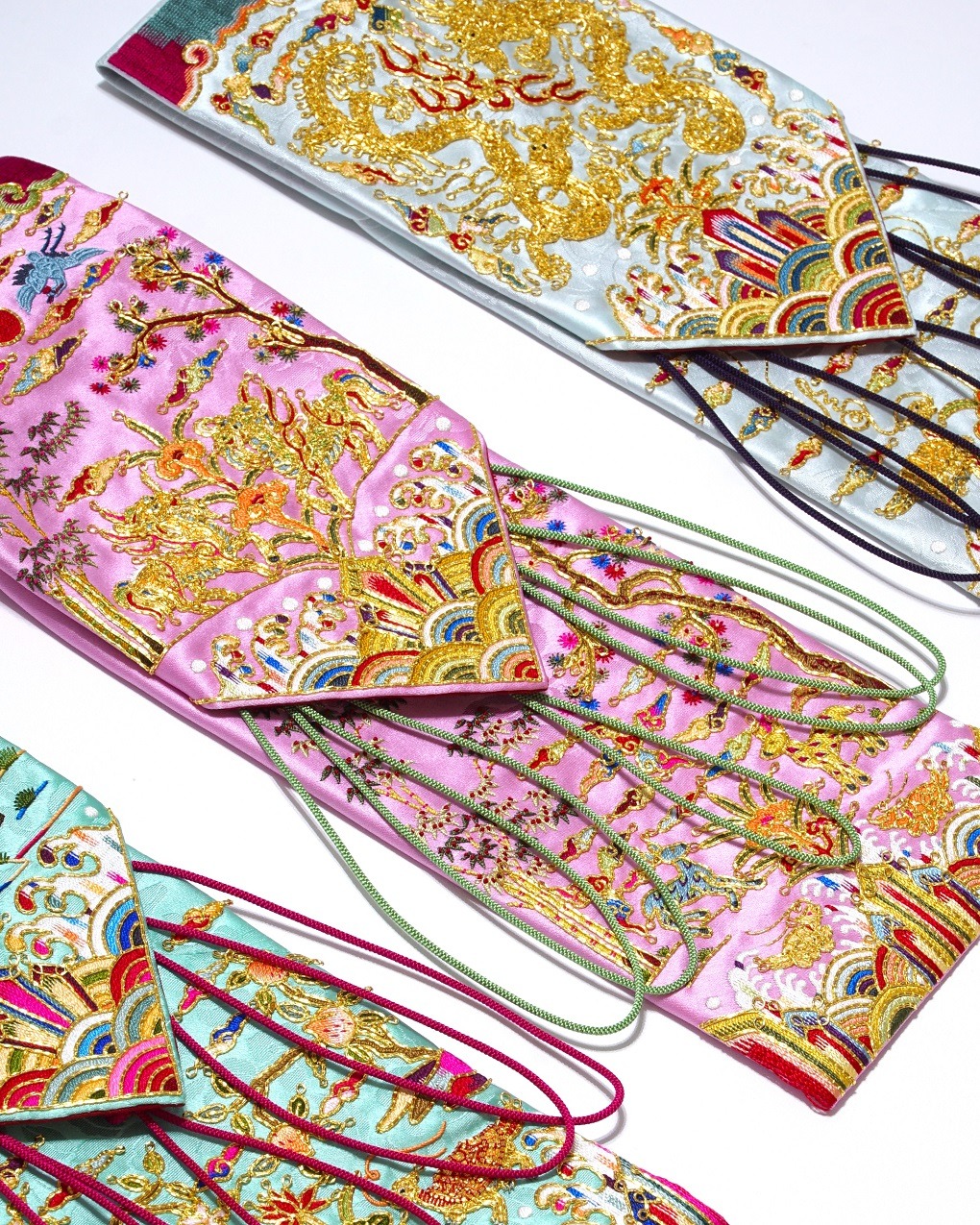
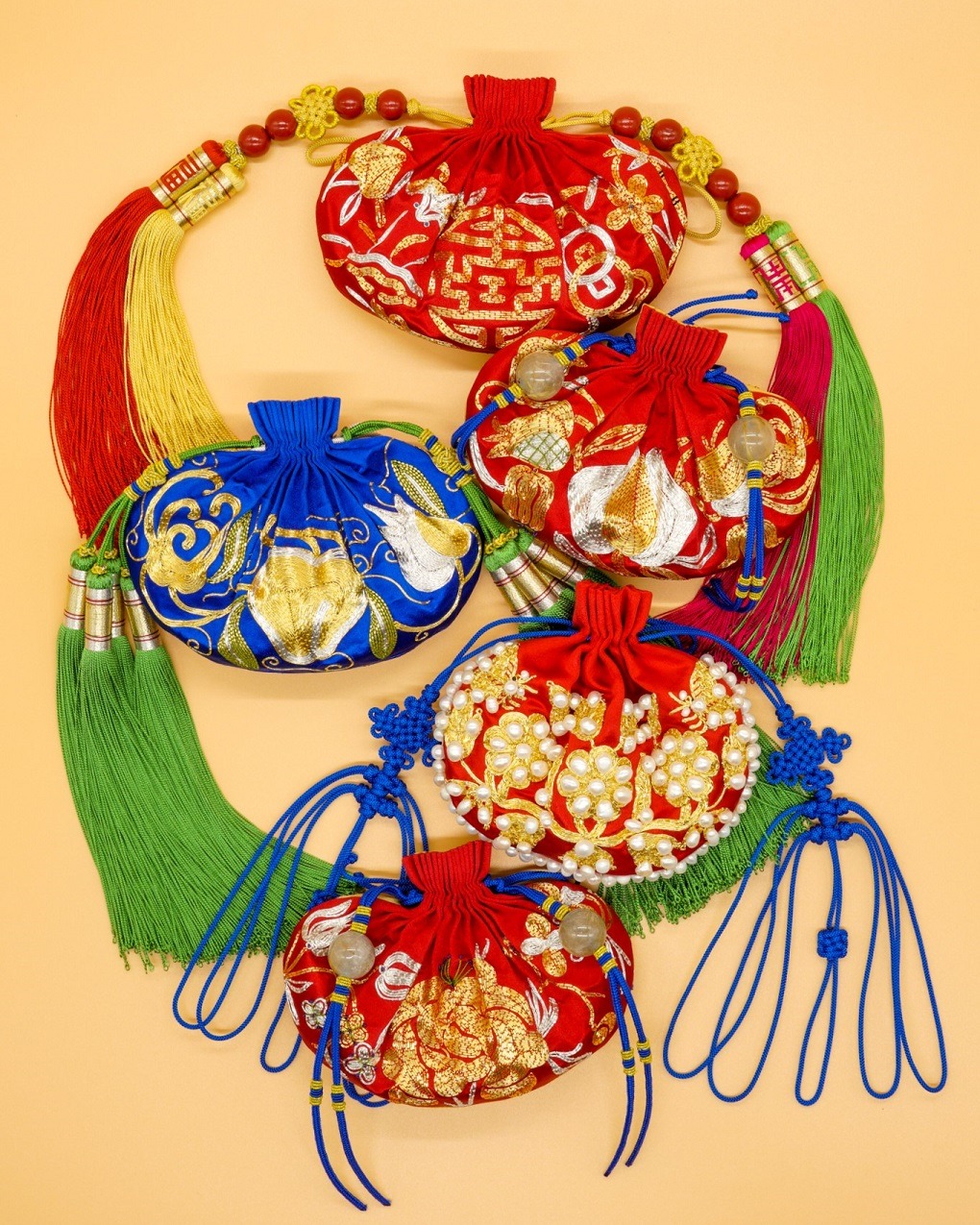
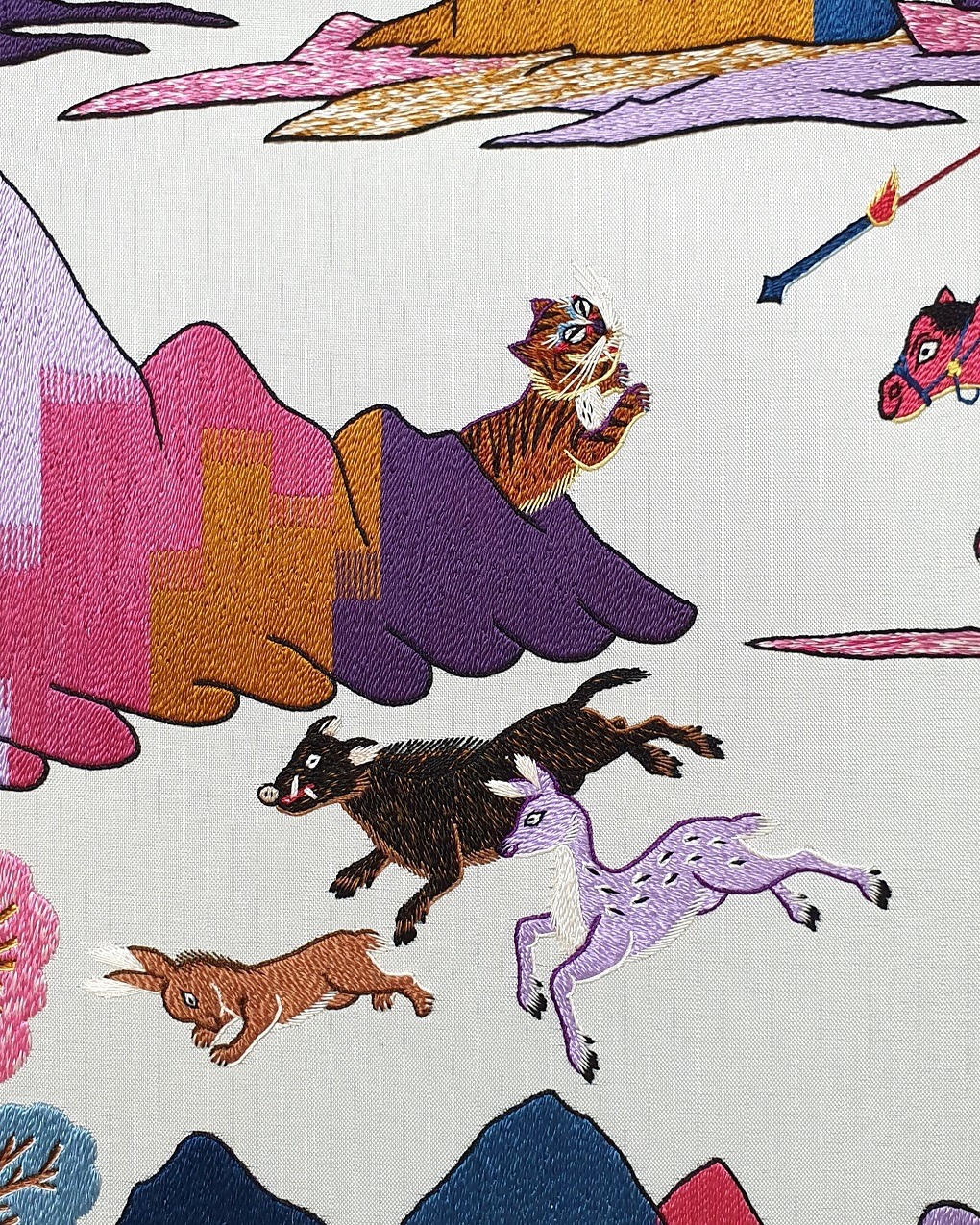
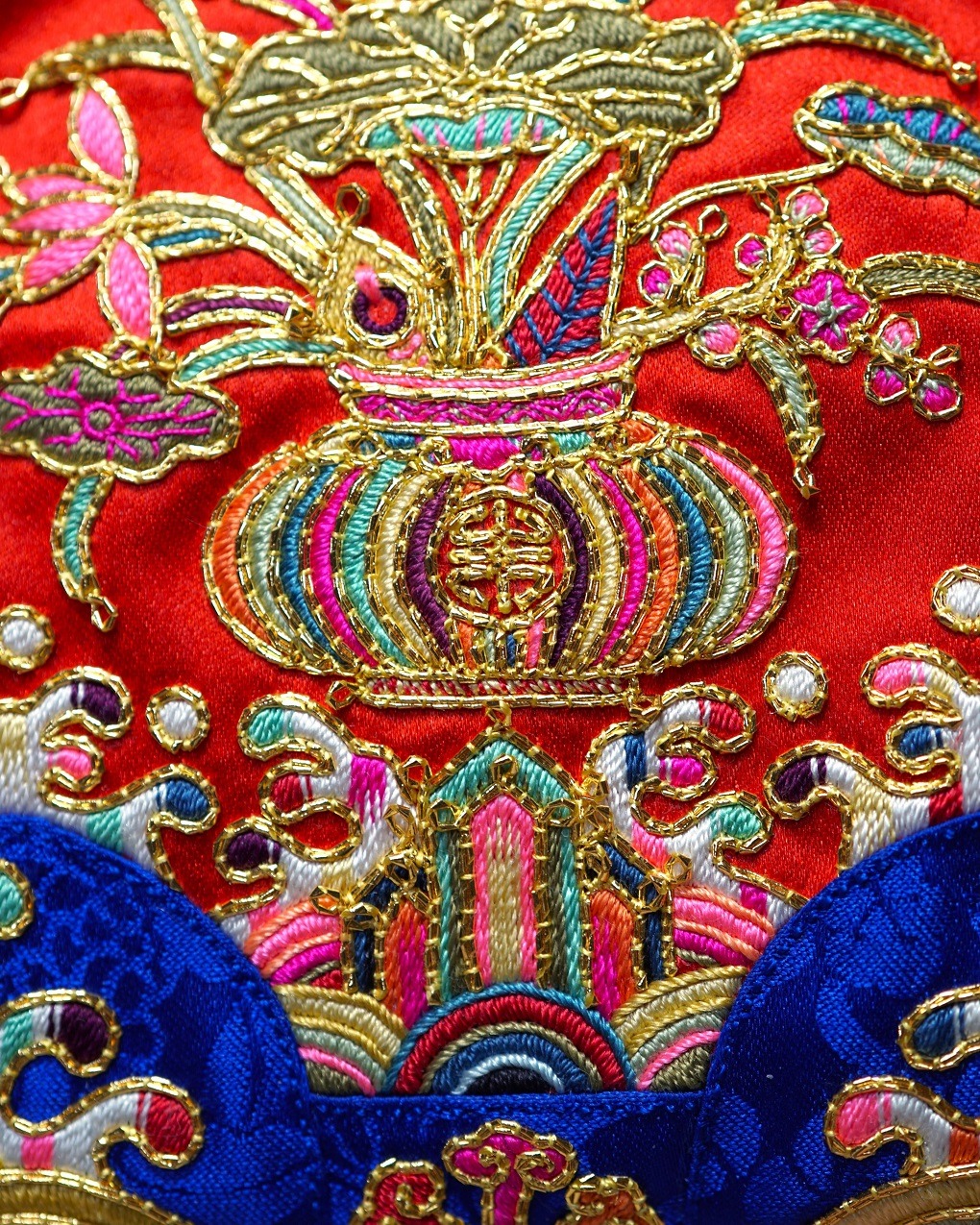
The language of symbols
Nearly every motif in traditional Korean embroidery has a symbolic interpretation, so the way they are combined is important in terms of creating meaning. For example, a deer (symbolically the spirit of Taoism) is often shown with a mushroom (representing the elixir of life); a representation of the ‘deer’ (or Taoist spirit) achieving eternal life by eating the mushroom.
The concept of yin and yang – that opposites are needed in order for harmony to exist – meant that historically Korean embroiderers or painters preferred to put things in pairs. It might be a pair of the same animal (for example, a buck and a doe) or a pair of different things that go well together due to their symbolism, such as a pine tree and a bamboo tree, or a deer and a mushroom.
You can also make a symmetrical design out of a set of the traditional Korean longevity symbols. For example, placing a pine tree and a bamboo tree on opposite sides to each other in one panel, or a pine tree on one side of a pillow end and a bamboo tree on the other. You might use other trees if you like, and you can find a peach tree replacing bamboo in some ancient pieces, however, you’d never use something like maple trees or elderflower trees as longevity symbols. I like to notice such conceptual elements and bring them into my work.
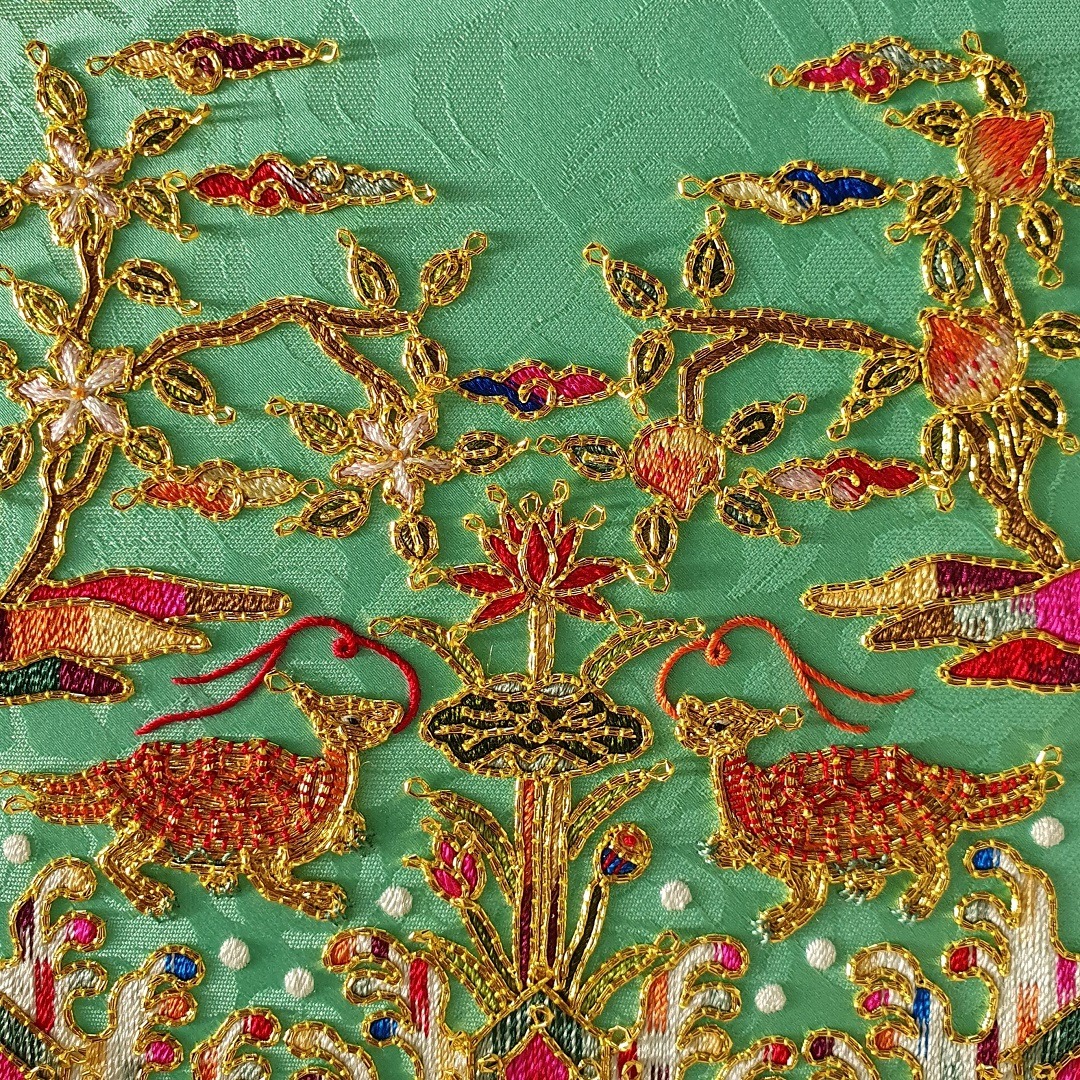
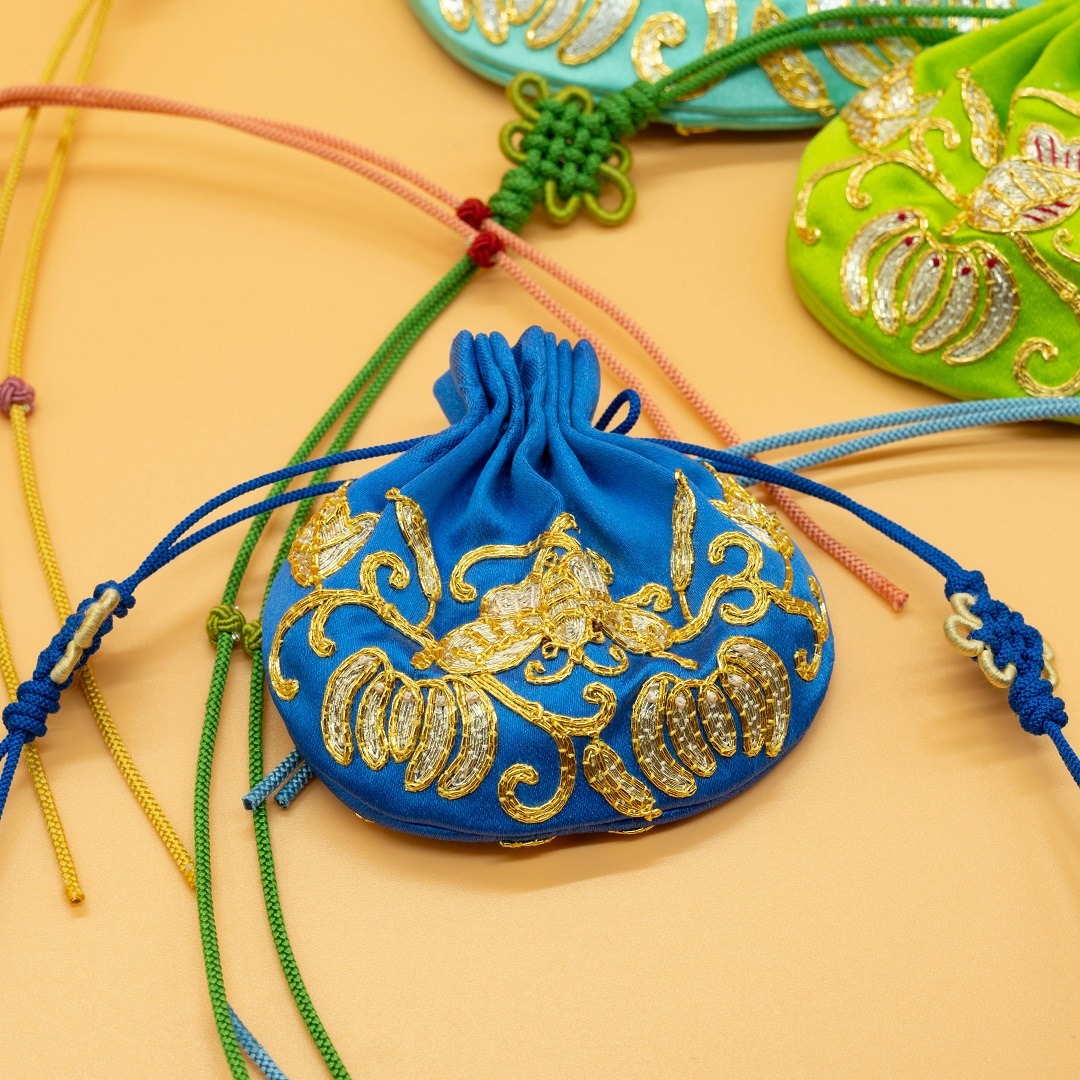
Making up for lost time
I don’t intend to stick to the traditional way of doing things all of the time and I’m willing to be more flexible in my future work. Yet, chances are that I’ll continue working with the traditional techniques and subjects because I’d really like to see Korean embroidery given the attention it deserves.
In the late 1800s and early 1900s, Korean embroidery – along with every other element of the country – went through tough times due to Japanese colonialism. Traditional Korean embroidery was banned and people were forced to embroider in the Japanese style. This was at a time when there was a huge wave of Western culture and rapid industrialisation.
It is only recently that Korean embroidery has begun to be studied properly and given its place. I can’t help wondering what it would have been like if it hadn’t been interrupted and, instead, given the chance to develop. It will be hard to make up for the lost time and bring Korean embroidery to where it would have been. Nevertheless, I want to try my best to branch out directly from the original Korean embroidery, rather than rushing to jump forward 100 years.
The creative process
I often embroider for hours on end, so it’s hard for me to set time aside just to plan and develop ideas. While I’m not good at organising things, I’m constantly gathering ideas. Often, I’ll be thinking about my next project when I’m walking down the street, having a cup of coffee, taking a shower, or working on a current piece.
“I’ll sit with an idea, and it will often go through several rounds of revisions in my head before I bring it to fruition.”
Heewha Jo, Textile artist
So, although I might look spaced out, my mind is busy figuring out and testing ideas, and discarding some of them along the way.
My design process is quite intuitive and instinctive. Most of it is rooted in the Korean tradition and cultural heritage, which is filled with symbolism. While there are no absolute rules, and not every piece of historic Korean embroidery follows the same structure or design, with experience and having done loads of research, you can figure out some patterns.
When it comes to working out my design, I used to sketch with pencil and paper, which I feel most comfortable with, but I’ve gotten used to using Adobe Illustrator due to the convenient data storage.
The mother of invention
The only tools I need are a needle, embroidery threads and my hands. I like to use whatever I have around. I realised that, in the past, people didn’t have much equipment, and sometimes accidentally created something better by just managing with what they had. Therefore, I feel rather excited when I’m running out of a particular material and have to make do in order to keep going.
We often make the twisted thread ourselves; buying untwisted silk thread and twisting it by hand according to one’s preferred degree of twist. A thread can also be somewhere in between the twisted and the half-twisted.
There are no specific brands for Korean embroidery thread. An equivalent may be something like DMC twisted silk thread, which is somewhat in between but a little bit closer to twisted rather than half-twisted thread. Outside of Korea, I usually recommend people look for 2-ply twisted silk thread or if you want a specific brand, Soie Gobelins from Au Ver a Soie would be a good example. The Silk Mill is a great visual resource.
“However, there are no strict rules to follow, so technically you can use anything.”
Heewha Jo, Textile artist
Is it worth making?
I can struggle with justifying what I create. I should say that I really love fine art, especially painting. But one of the reasons I value these traditional embroidered items so much is their practicality. Although technically, the embroidery has no function itself, one could say it has a spiritual one, like an amulet that prevents misfortune, strengthening positive symbolic meanings from the auspicious design.
What’s interesting, however, is that most traditional embroidery embellished items created for specific functions or purposes. Of course, I’d love it if people today were able to use the items I make in the way our ancestors did. However, it’s a fact that these objects are not in everyday use nowadays. So, it’s a dilemma when I’m making something that is supposed to be used but is actually only ever looked at.
“Despite creating embroidered objects without a function, I’m always trying, at the very least, to instil the essence of craft in my work – aesthetic, utility and meaning. Therefore I’m always asking myself the same question: ‘Is it worth making?’.”
Heewha Jo, Textile artist
I hope asking this will help my work develop and mature, as well as continuing the Korean legacy of traditional embroidery, which encompasses longevity symbols, auspicious design, yin and yang, and the pure heart of the ancient embroiderers, which is found in their works.
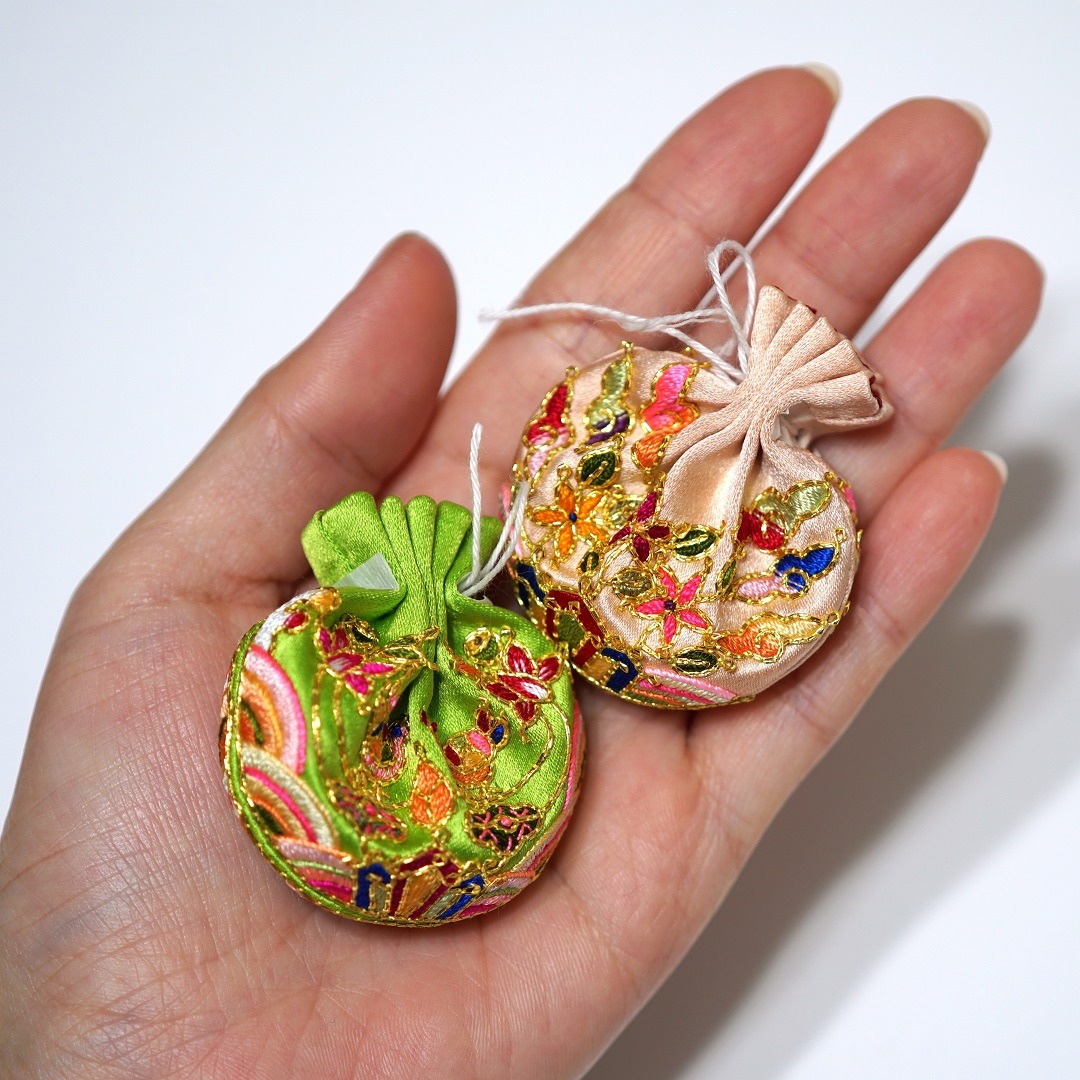
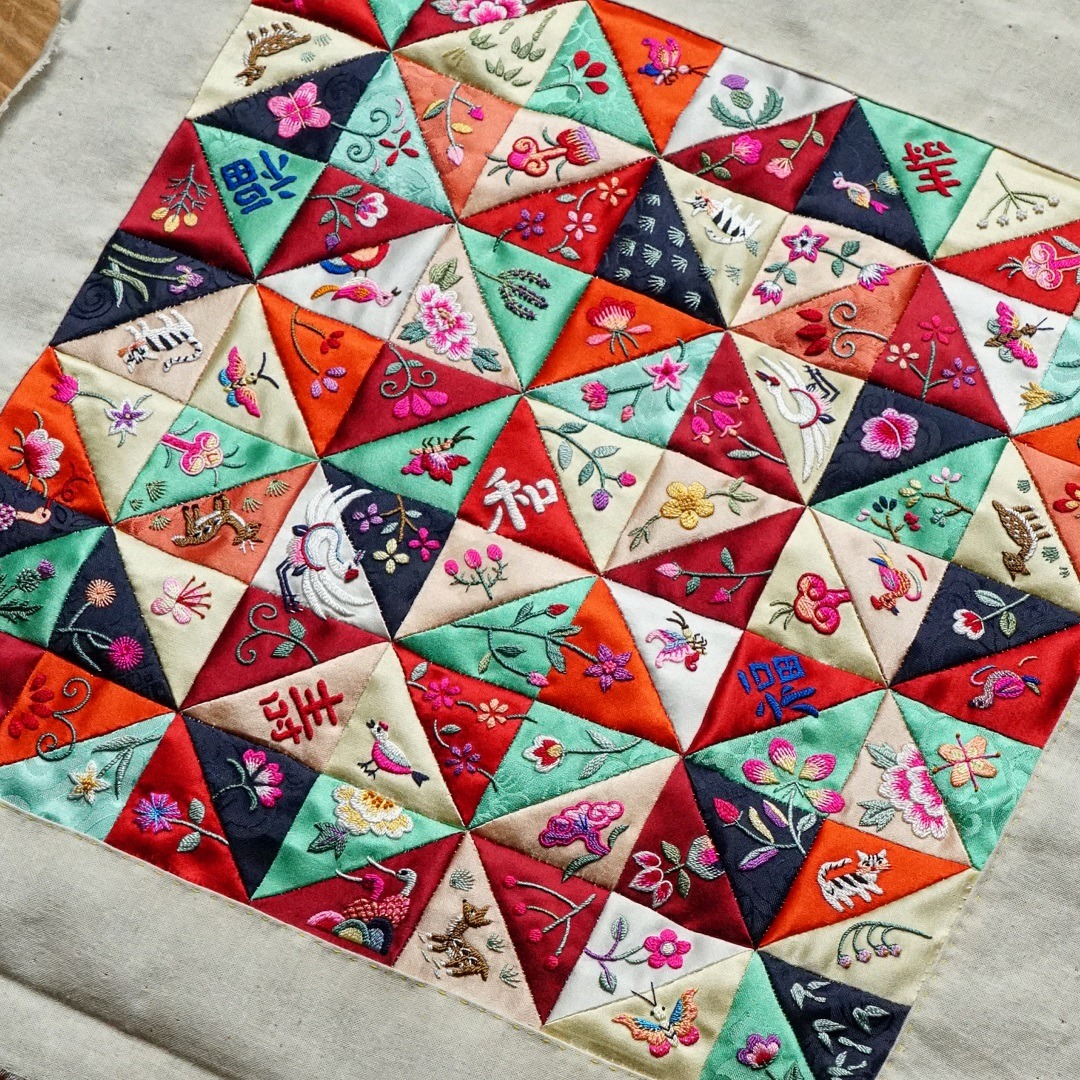
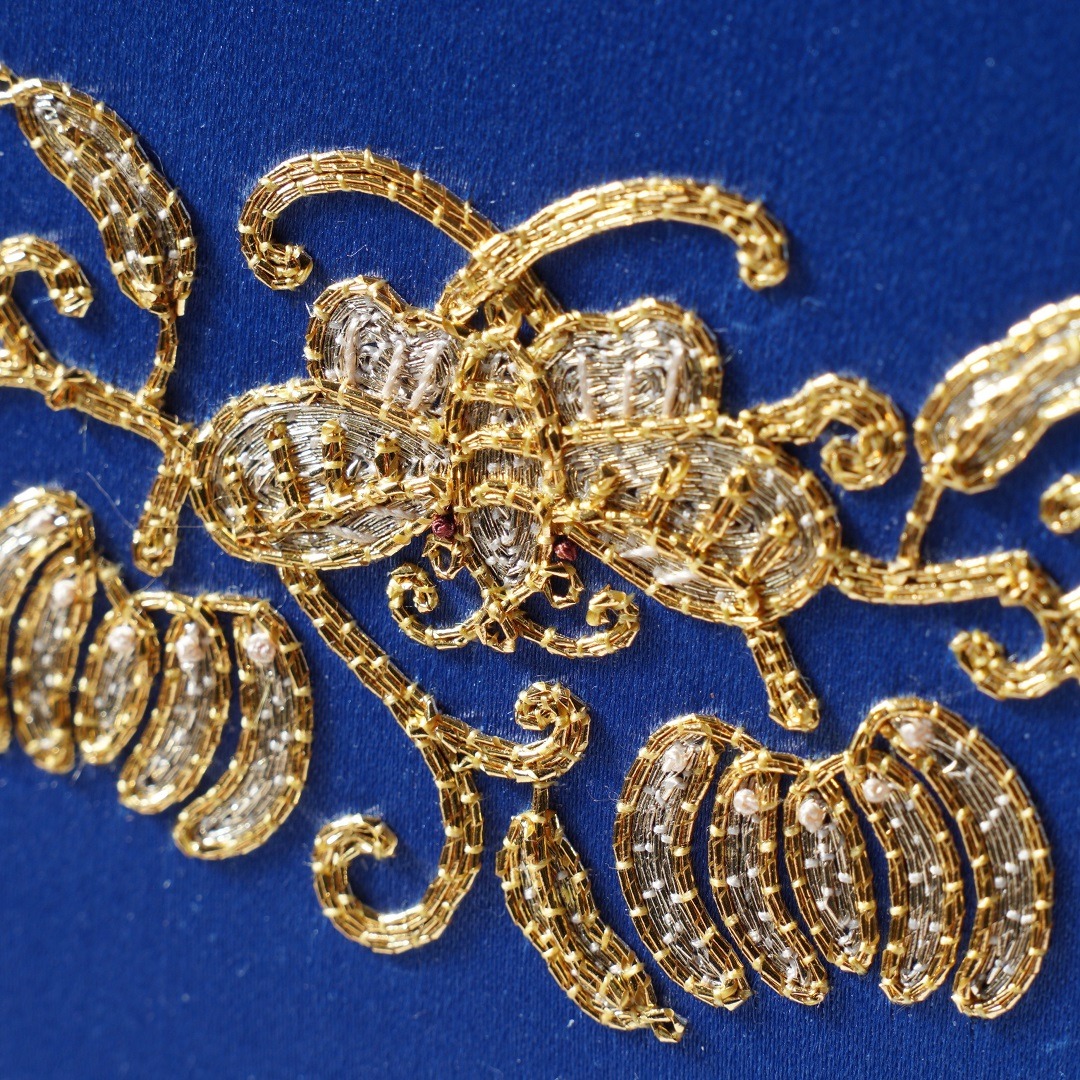
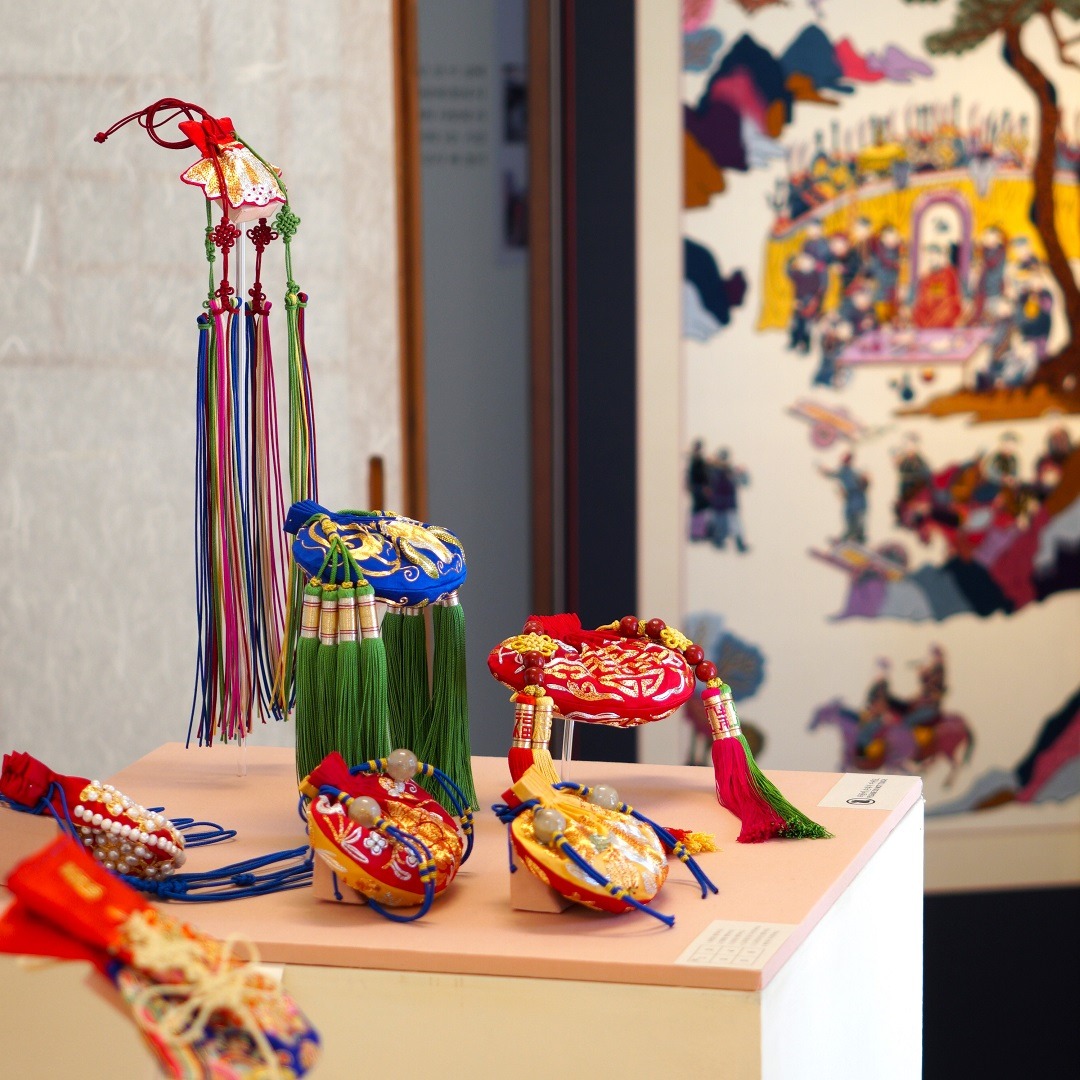
The power of curating
In 2022 I held my first solo exhibition, which was a great impetus for me to develop my work. I also fulfilled my dream of curating and hosting an exhibition. As well as my embroidery, I prepared everything, from selecting a traditional Korean house in Seoul as the venue to designing and making posters, invitations and digital brochures (using the photos taken by my better half), plus leaflets and description labels. I even created a set of display stands by customising rods, panels and fabrics so that I could arrange my works just the way I wanted.
Although all of this took a lot of time and effort it was worth it as, in the past, I had sometimes seen my embroidery or others’ being exhibited inappropriately or unattractively. Being my own creative director is something that I hope to continue in the future.
Seeing the light
People often comment that I have BA degrees in both Korean Language and Korean Literature, and Fashion and Textiles. That unusual combination sums up my life-long interests. Since I was a child, I’ve been captivated by anything relating to art and handicrafts, as well as Korean language and traditional culture. The national museums and galleries, or the ancient Korean palaces and temples in Seoul and other cities were our family’s regular holiday spots. I really enjoyed looking around the classical artefacts and architecture – and even souvenirs at the gift shops.
I wouldn’t describe my family as artistic but that kind of thing seems to be in my blood. My dad was a self-employed, skilful neon sign maker who wrote letters and drew his own designs. My mum was the one who, every morning I discussed what to wear and how to match things. She first taught me how to draw, sew and knit.
“This family culture encouraged me to feel comfortable with seeing colours and creating things by hand, as well as preferring to work for myself rather than be an employee. Although I never thought I’d be an embroidery artist, I knew that I would end up doing something like it.”
Heewha Jo, Textile artist
I’m directly inspired and influenced by Korean relics like paintings, costumes and pottery, along with embroidery, and indirectly by my interest in fashion and fashion design. I’ve been interested in clothing for as long as I can remember, which is why I ended up studying Fashion and Textiles and working in the clothing industry.
It was while I was working for an international company that I first saw embroidery in a new light. I also used to design and make clothes myself. Nowadays, although fashion doesn’t directly impact my work, something like the theme of a seasonal fashion collection, a magazine fashion shoot or the colour palette of the year does make my heart beat faster and fuel my creativity.
I used to be the type of person who falls easily in and out of love with what I like. I loved painting, knitting, making clothes, writing and whatsoever, but none of them held my interest for long. This is probably why I hesitated about going straight into my own business.
Those around me – and even me if I’m honest – probably thought my interest in embroidery would die down. However, it’s been eight years or so now since I’ve devoted myself solely to Korean embroidery and I’m still not tired of it. I have a long list of ideas to embroider so there’s no room for anything else. It will take me an enormous amount of time, maybe more than my lifetime, to complete all of what I want to create.
l would like to share what I know and love of Korean embroidery through exhibitions, lectures and talks, as well as photos and books, in both Korean and English if possible. My dream is to present a new collection of work regularly – perhaps annually or biannually as fashion designers normally do. Of course it would be a challenge, requiring a massive amount of time and effort from me, but it would be worth it as there are trends in embroidery today just as there were in the past.
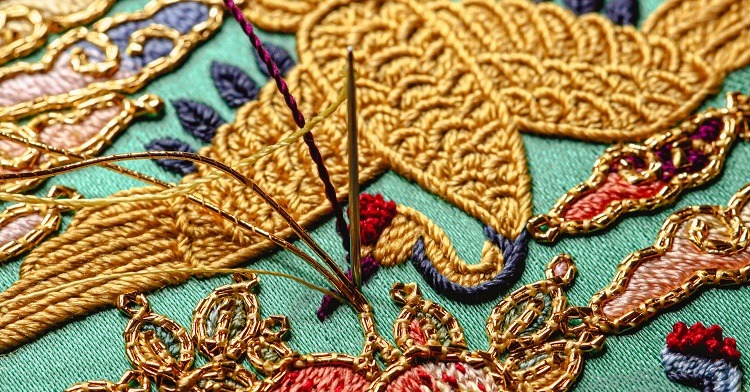

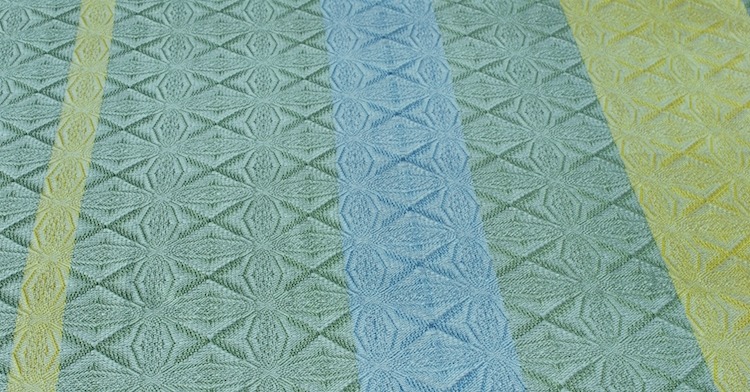
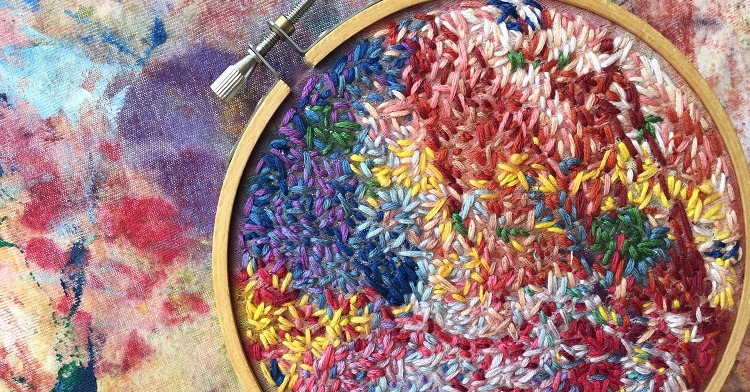
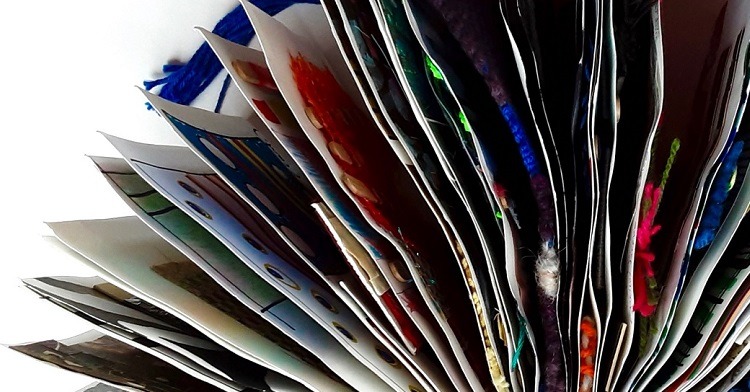
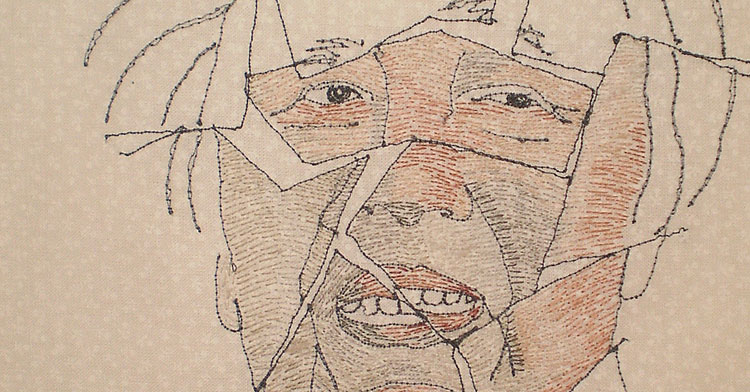
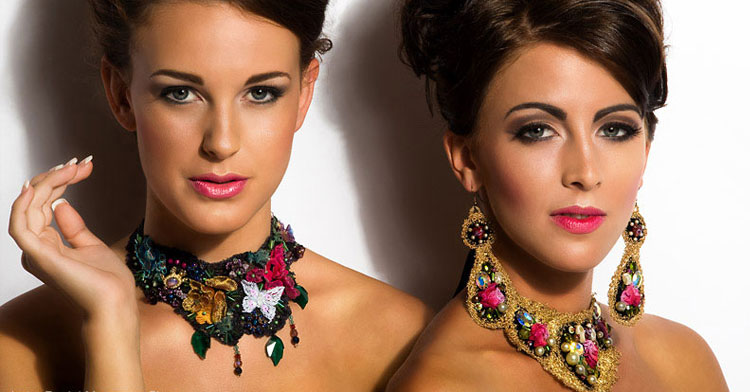
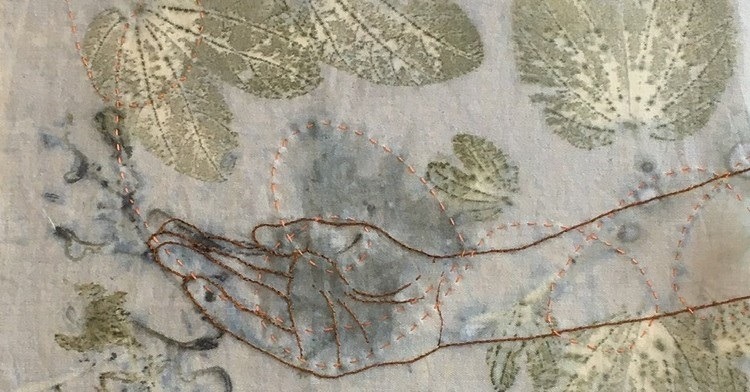
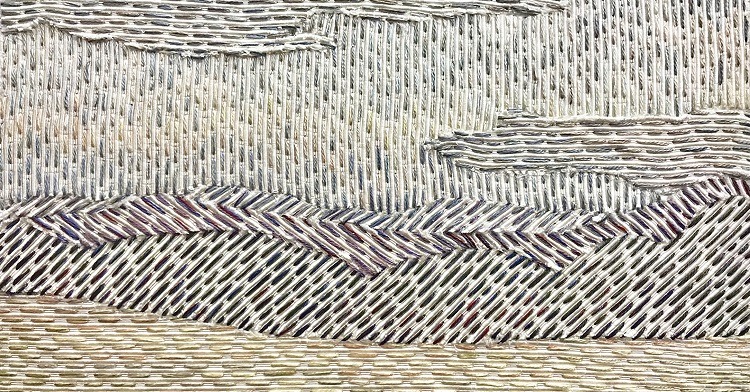
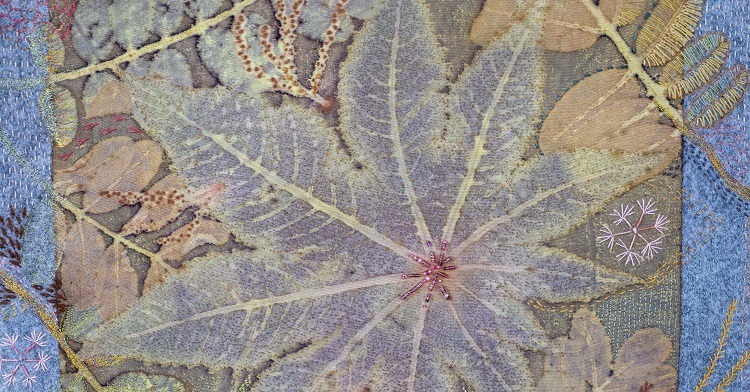
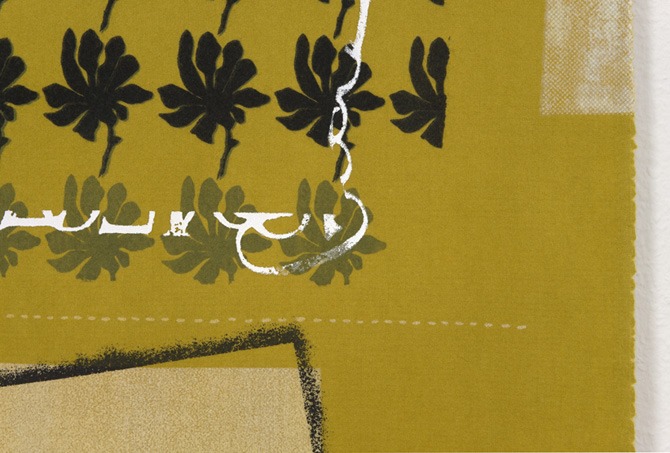
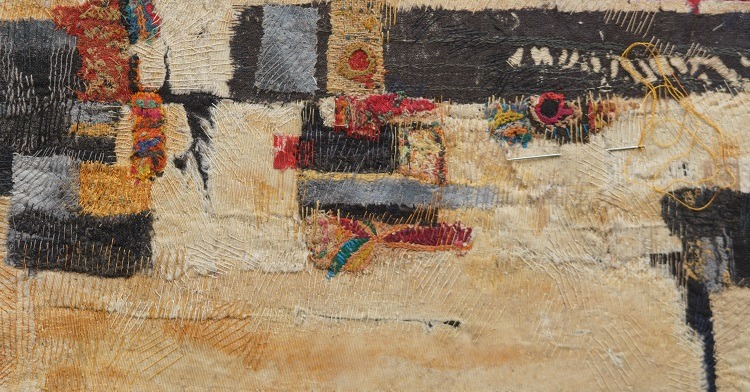
2 comments
Janice McEwen
You might be interested in the beautiful embroidered soft sculptures of Australian Indigenous artist Marlene Rubuntja.
https://www.yarrenytyarltereartists.com.au/marlene
She is a strong cultural leader and her work is well recognised nationally in Australia but maybe not internationally.
Heehwa Jo
Thank you for introducing me to her beautiful work. It’s always appreciated to convey the cultural spirit and heritage and melt it one’s artwork.